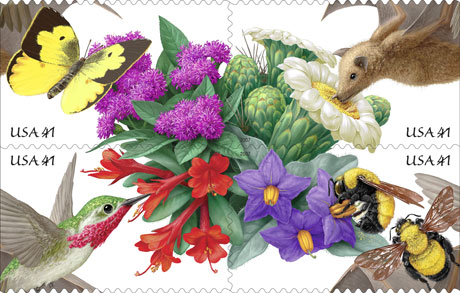A new review of insect pollinators of crops and wild plants has concluded they are under threat globally from a cocktail of multiple pressures, and their decline or loss could have profound environmental, human health and economic consequences. Globally, insects provide pollination services to about 75% of crop species and enable reproduction in up to 94% of wild flowering plants. Pollination services provided by insects each year worldwide are valued at over US$200 billion. The review, published on 22nd April 2013 in the scientific journal Frontiers in Ecology and the Environment, was carried out by an international team of 40 scientists from 27 institutions involved in the UK's Insect Pollinators Initiative (IPI), a £10m research programme investigating the causes and consequences of pollinator decline. Dr Adam Vanbergen, from the UK's Centre for Ecology & Hydrology (CEH) and science coordinator of the IPI, led the review. He said, "There is no single smoking gun behind pollinator declines; instead there is a cocktail of multiple pressures that can combine to threaten these insects. For example, the loss of food resources in intensively farmed landscapes, pesticides and diseases are individually important threats, but are also likely to combine and exacerbate the negative impacts on pollinators."
The review concluded that:
•Pollinator populations are declining in many regions, threatening human food supplies and ecosystem functions.
•A suite of interacting pressures are having an impact on pollinator health, abundance, and diversity. These include land-use intensification, climate change, and the spread of alien species and diseases.
•A complex interplay between pressures (e.g. lack of food sources, diseases, and pesticides) and biological processes (e.g. species dispersal and interactions) at a range of scales (from genes to ecosystems) underpins the general decline in insect pollinator populations.
•Interdisciplinary research and stakeholder collaboration are needed to help unravel how these multiple pressures affect different pollinators and will provide evidence-based solutions.
•Current options to alleviate the pressure on pollinators include establishment of effective habitat networks, broadening of pesticide risk assessments, and the development and introduction of innovative disease therapies.
Source: Birdguide, 30 June 2013
http://www.birdguides.com/webzine/article.asp?print=1&a=3738

- Login om te reageren
